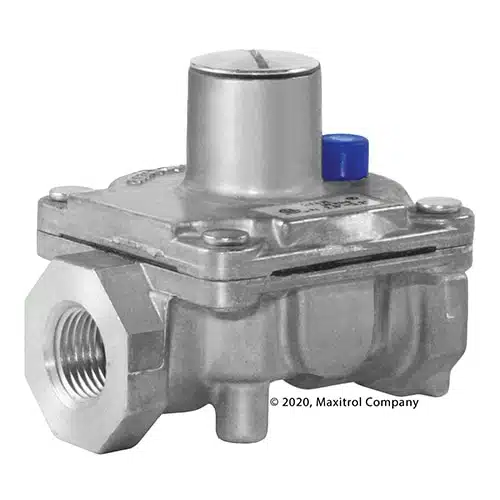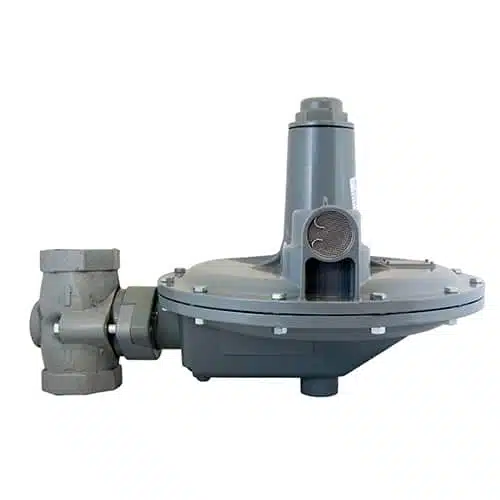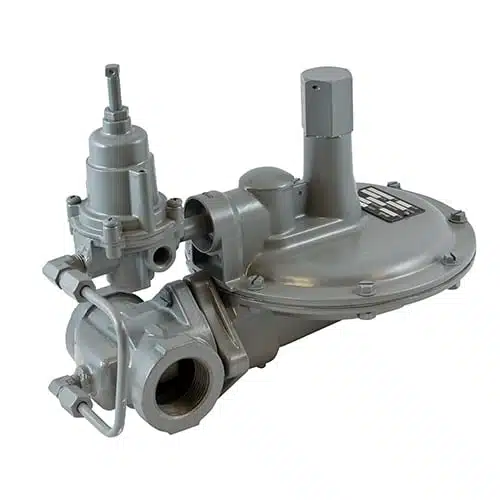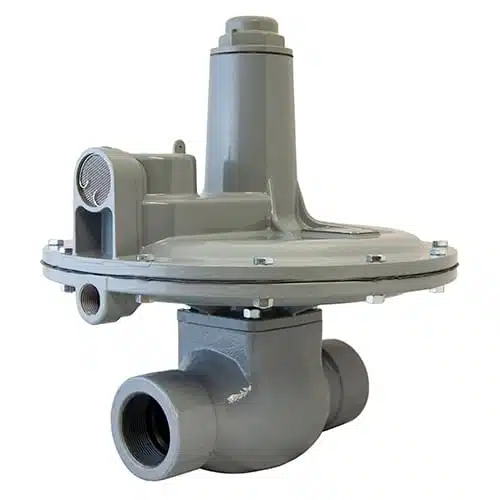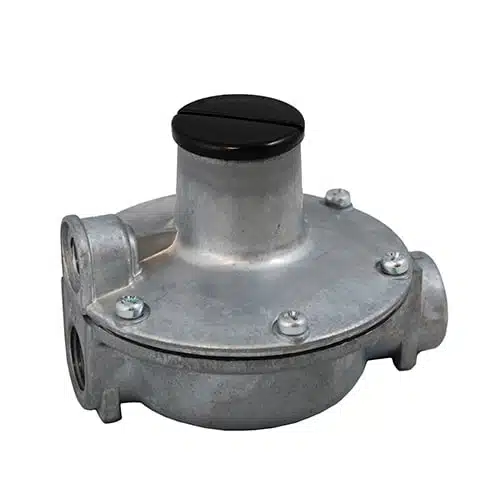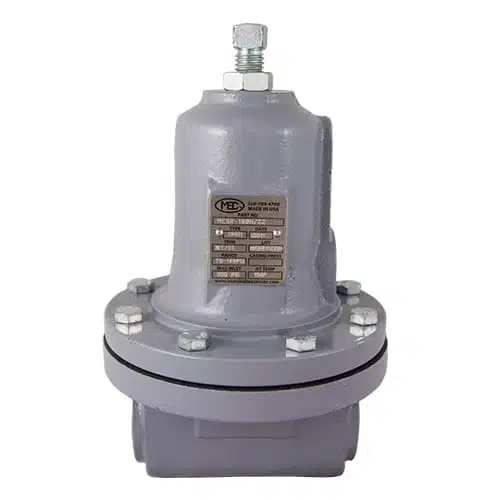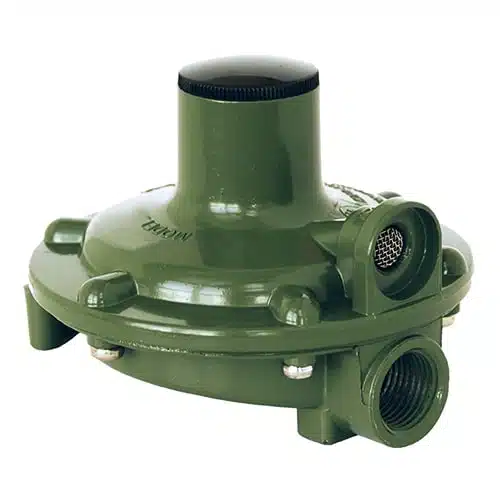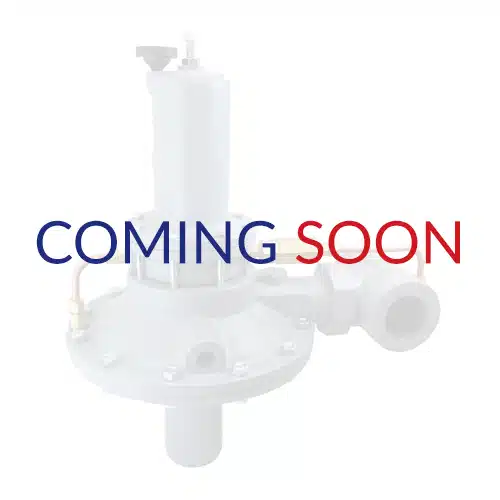There are many different types of pressure regulators used on gas. It typically depends where the gas regulator will be installed and what the application is. Pressure reducing regulators or back pressure regulators/relief valves are the most commonly used....
A pressure reducing regulator maintains a reduced outlet pressure while supplying the required capacity for the equipment downstream. A pressure relief valve is used in case the upstream regulator fails and evacuates the excess pressure of gas to protect the downstream equipment from over pressure.
Spring-loaded service regulators and direct acting regulators (self-operated) regulators are normally used for PSI inlet to inches water column outlet but can also be used for PSI to PSI as well. Some models are very precise while others are more rough cut for use at high pressures.
The line or service regulator used at the equipment is the most important regarding pressure drops for performance. Pilot operated regulators are more commonly used for PSI Inlet to PSI Outlet when high flows and accuracy are required. These types of regulators normally always require a downstream relief valve as internal relief is not an option.
The basic questions to ask for selecting a pressure reducing gas regulator are the following:
- Inlet pressure (minimum-maximum)
- Outlet pressure (setting or range)
- Capacity required (BTU, CFH, MBH, m3, etc)
- Type of gas (natural, propane, etc.)
- Pipe size
- Type of equipment being used on
With the above information we can select any type of gas regulator for your application.
Most standard pressure reducing regulators come with a full internal relief valve to protect the downstream equipment. Other options include indoor ventless, integral slam-shut valve and high pressure specialty regulators. Let Norgas help you select the right gas regulator for your application. Request a quote today.
